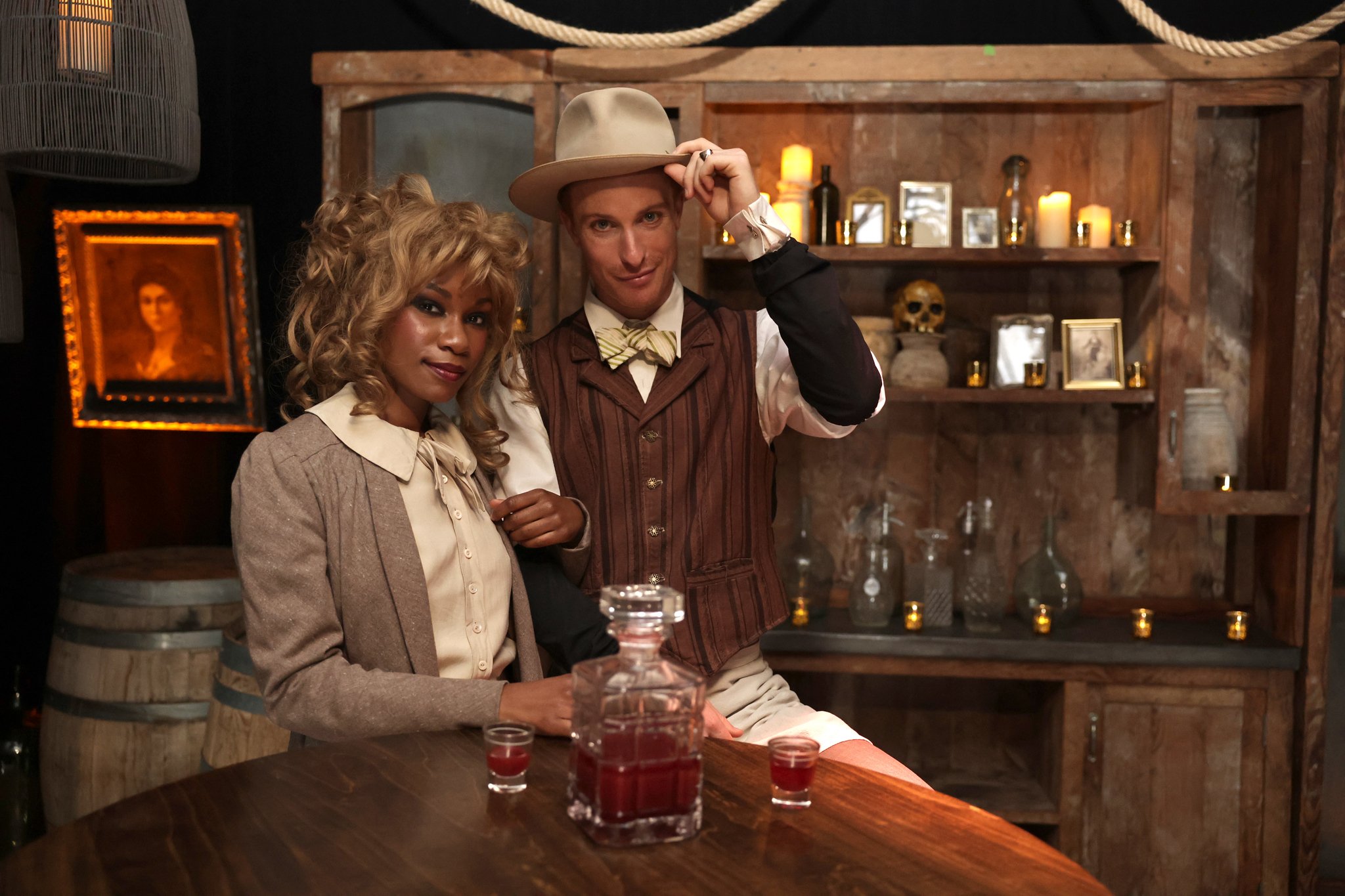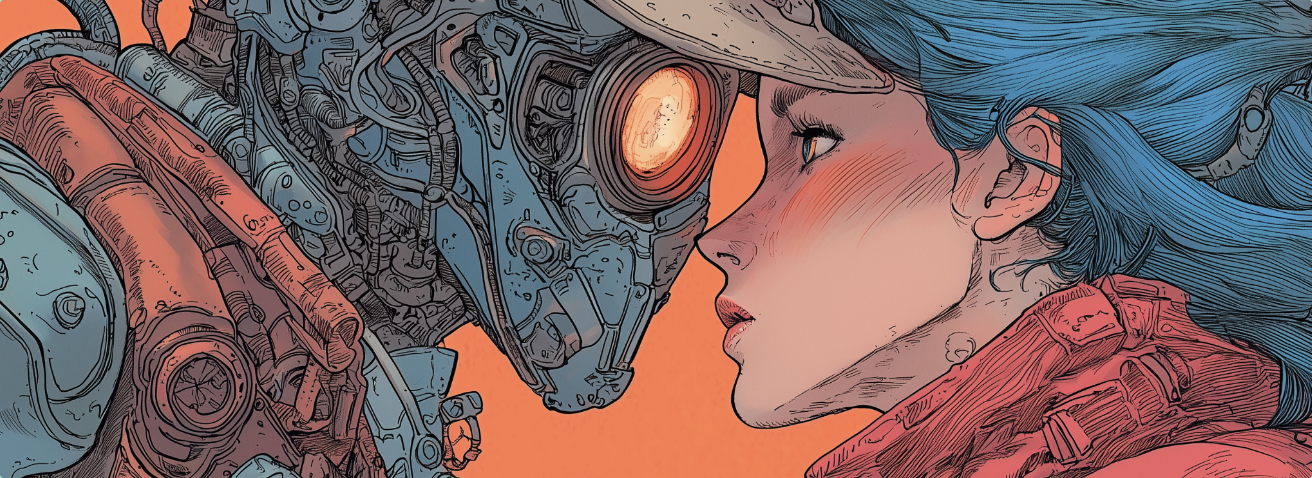Fandoms have emerged as pivotal forces in contemporary pop culture. They not only shape cultural dialogues, but also foster profound connections with the narratives and characters they admire. This passionate involvement of fandoms is a dynamic engine driving the entertainment industry forward.
Mike Monello is one of the creators of The Blair Witch Project and Co-Founder/Creative Director of Campfire. The movie was the springboard for a new, transmedia approach to telling stories across multiple channels that creates not only brand love, but fan love. This is perhaps the most powerful tool we have for supporting a creative idea.
Since then, Campfire has applied these principles to generate unprecedented buzz and engagement for dozens of much-loved IPs, including The Walking Dead, Westworld, What We Do In The Shadows, Ted Lasso, and many more.
In this Case Study Campfire, Monello deconstructs the fundamental principles that are the cornerstone of his approach. Drawing upon recent projects executed for AMC Networks’ Street of Immortality, Hulu Animayhem: Enter the 2nd Dimension, and Only Murders in the Building: Backstage at the Goosebury, he illustrates their practical application and demonstrates how they’re brought to life in engaging, real-world contexts.
Expect to learn:
- How to design for multiple levels of fandom, from “skimmers” to “dippers and divers”
- The importance of leaving “white space” for individual stories
- How to spark meaningful participation with fans
The Making Of A New Mythology

When Monello and his team made The Blair Witch Project back in 1997, it was the beginning of a journey that would change their perception of storytelling. The original goal was to make a modest indie film that would make back its money through specialist magazines and raise investment for bigger future projects. However, over the process of the making of the movie the creators put up a website that began to attract a lot of attention.
By the time the film was released, the website had become a multi-platform experience with a committed fanbase. The nascent site had consisted of a timeline of events and some links that were added later to mostly photographs, as video was too expensive to host at the time. The site didn’t aim to answer questions, but inspire new ones. Pivotally, it had a discussion board where fans could start talking about the movie’s mythology.
What Monello hadn’t anticipated is that these fans would start participating by building their own sites, creating their own characters, and telling their own stories about fictional encounters.
“We were trained filmmakers used to curating the narrative – and our story was suddenly out in the world and being manipulated by fans. That understanding eventually informed some of the film edit. It was an exciting revelation for us.”
Mike Monello
When they pitched their next project and tried to include these aspects of the experience, they found that these ideas were dismissed as part of marketing. At the same time, advertising agencies and brands were approaching them and asking for help mastering the world of digital storytelling, as they weren’t structured to deliver this kind of work. Campfire was born to create a new kind of immersive experience, going on to conjure immersive fan worlds for a range of audiences from family comedies to horror.
The Street of Immortality, a fan experience designed for this year’s San Diego Comic-Con, is a recent example of this work. Fans were invited to explore an authentic recreation of turn-of-the-century New Orleans Storyville, as seen in Anne Rice’s Interview with the Vampire. This was the first time “the immortal universe” was being presented to fans in a spectacle – and with a sold-out ticket run, fans voted it “The Best Offsite at San Diego Comic-Con 2023”.
6 Key Principles From The Front Lines Of Fan Experiences
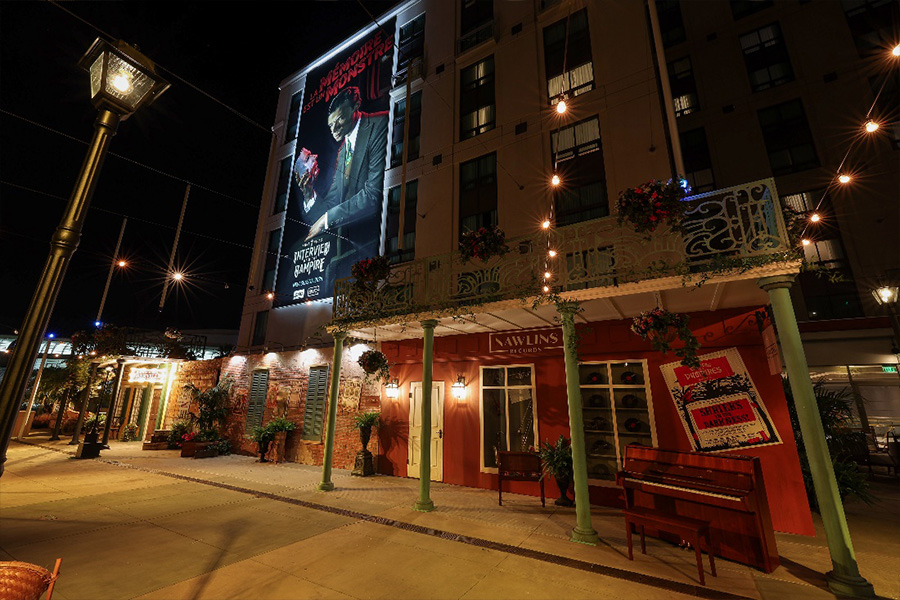
Over the years, Monello has developed a key set of immersive design principles that inform all the work Campfire does:
- Design for multiple levels of engagement.
Campfire designs experiences for programmes that already have fan cultures around them or for genres that have an existing fan base. They’ve learned that people don’t experience things the same way, depending on their level of fandom. So they developed a scale of “skimmers, dippers and divers” to explain their decisions to clients and gain permission to do things that a traditional agency wouldn’t be able to.
Skimmers are at the least engaged end of the scale. They don’t participate in a meaningful way, and are best reached initially through OOH media that gives a brief impression of awareness. They aren’t really paying attention, and get their information through media spend or word of mouth.
Example: in The Street of Immortality, the skimmers were reached through huge building wraps that made a big impression.
Dippers will engage casually with the story, and are crucial for participation on social media and spreading the word of your experience.
Example: in The Street of Immortality, the dippers were reached through food and drink, acts like magicians, and creating shared moments for smaller crowds that brought people out of their groups and mixed them up to create connections
“When you connect fans in an experience, their fandom deepens. This is often the most powerful thing you can do.”
Mike Monello
Divers are your superfans. They will explore every aspect, spend serious time in your story world, and are deeply passionate about it. They make up the smallest percentage of your fandom, but are also its heart and soul. You can spend the least money to reach them, but a lot of time engaging them. And they seek social rewards from your experience – i.e. to meet other like-minded people.
Example: in The Street of Immortality, the divers were engaged by leaving out sheet music for a song in the show. They knew this held greater meaning, even when others didn’t.
“It’s about finding out what they’re invested in as a community and giving it to them.”
Mike Monello
Crucially, this scale isn’t a funnel. A person might be a dipper in one experience, and a diver in another. The goal isn’t necessarily to move them from one area to another, but to design a balanced experience that allows them to find the right way in, whatever their category. Everyone is fulfilling a role in a vital fan community, and the number of divers will grow organically as the community does.
Monello starts with designing an experience not for the divers, but for the skimmers. This provides a way into the narrative. For The Street of Immortality, for example, the experience was pitched as a taste of 1920s New Orleans, not a vampire quest. This detail comes later, when they are immersed in the story world. It’s also easier to design for divers, as long as you understand how to look at fan cultures. Monello recommends spending time where they are – Discord, Reddit, etc – and observing what they love and hate.
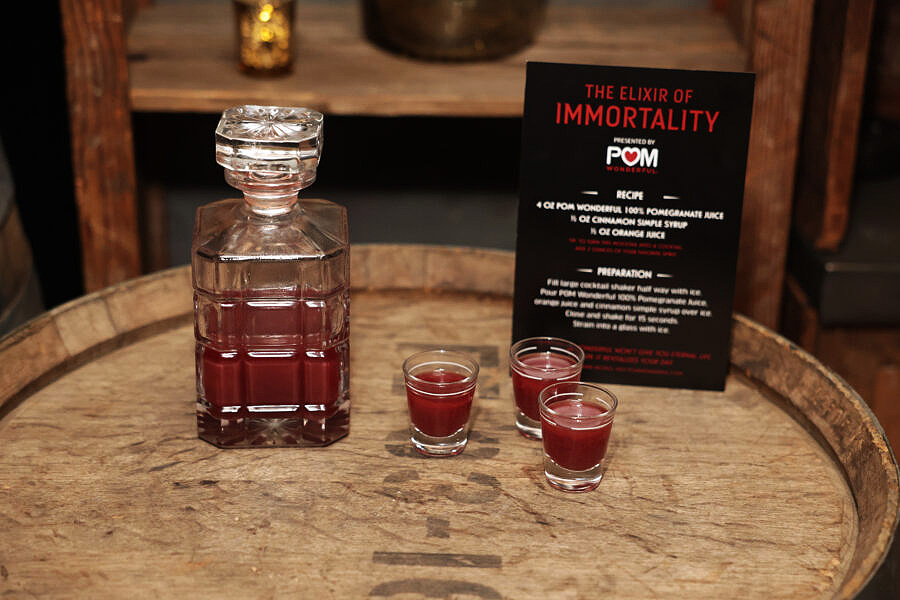
- Create white space for individual stories.
As marketers and creators, we can be so invested in our ideas that we lose sight of the fact that audiences don’t care as much as we do. As Bette Midler’s character in Beaches says: “Enough about me, let’s talk about you! What do you think of me?”
We hope that people will be wowed by our achievements, but in reality the amount of work we put in means nothing to them. Audiences want to be immersed, but too much detail can actually overwhelm them, as it leaves no space to explore. Consequently, we need to leave some “white space” where participants can fill in the gaps with their own stories.
In The Street of Immortality, for example, there was a piano near the entrance where professional players would play a song from the show as guests filtered through. At certain times, this piano was left unattended as a subtle invitation for fans to play it. When they did, a singer would join in. The fans recognised this as a special, impromptu and magical moment – but in fact, it had always been planned. The key was to make them feel as if they’d come up with it themselves.
- Participation must be meaningful.
Any element of participation must matter to the story and the experience. If you ask someone to interact and it doesn’t have meaning or change anything, it feels hollow and that’s what they’ll take away.
At The Street of Immortality, fans were invited to leave offerings in front of a vampire’s home. Earlier in the experience they’d been given talismans to encourage this. However, they wanted to keep the talismans for themselves – so they began leaving objects they’d received at other activations. The divers took things even further, making their own props to leave. One fan made a record of a song from the show. Campfire imbued this with even more meaning by putting it in a shop window on the street, and sharing a photograph on AMC’s official social media account. The fan felt seen and honoured, and other fans loved the fact that she had created something that was embraced by the experience.
“When a fan does something like this, it’s a gift. You have to be ready to adapt to it.”
Mike Monello
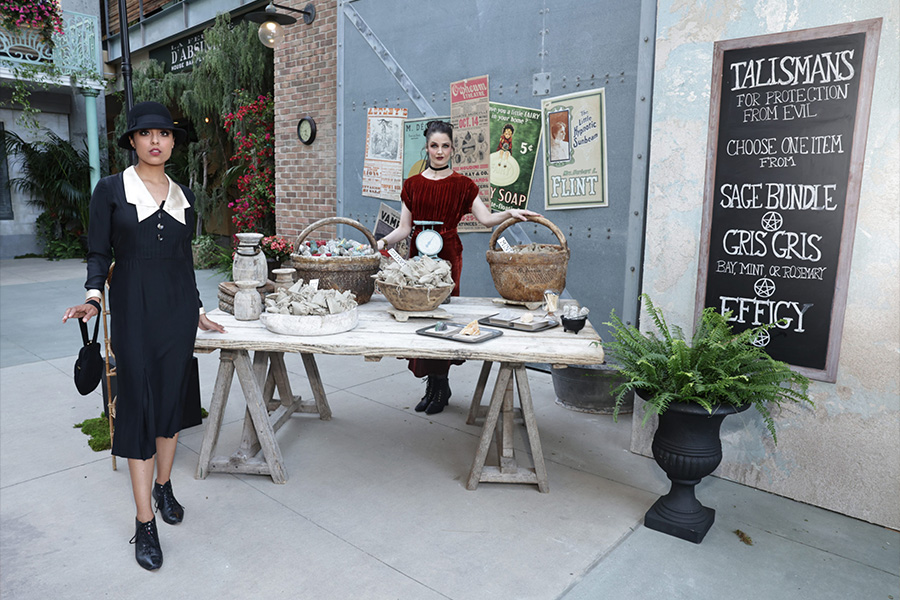
- Capitalise on your biases.
We all have biases – but you can do magical things when you understand them.
People want to play along. Campfire used to design for the people who wanted to find the boundary of the experience and break it. They soon realised that only 2% of people fell into this category. They decided to focus on those who were playing along instead, and let those who wanted to break it do so as soon as possible and then either decide to play along or leave. Monello also warns that this can be an important metric to look for when testing. If people are playing with the edges of your experience, it means they aren’t immersed.
Heed the Ben Franklin Effect. When dealing with a political opponent he needed to win over, Franklin asked to borrow a book from him, even though he already owned it. When he returned it a week later, he was sure to tell the opponent how much it had helped him out. Eventually, he got his vote. Franklin understood that although we believe that we do nice things for people we like, the reverse is actually true. We come to like people we do nice things for, and hate people we do bad things to. This explains our sad attitude towards the homeless – they make us feel bad, so we grow to hate them. When you want people to hate or love a character, this can be a useful insight.
Story shapes user behaviour. As Kurt Vonnegut said, “We are what we pretend to be, so we must be careful about what we pretend to be.” Our brains look to complete stories. This means that variations in user behaviour are never as dramatic as we think, as their actions are heavily influenced by the story they’re experiencing. By papertesting around interactive moments, you can get people to react or have the emotional connection you’re looking for. In The Street of Immortality, people were given a suggested role in the experience and guided along a path that opened their eyes to what was happening. They then became very invested in uncovering these secrets.
“People believe they’re acting with agency, but actually they’re putting elements together in their heads. Story is the secret weapon of all great immersive experiences. It’s the most impactful thing you can do. You don’t tell people what to do: you create the environment in which it’s natural to do it.”
Mike Monello
Think like a forger. To create an absolute illusion of authenticity, you must engage the visual, intellectual, and all five senses. In The Street of Immortality, the talismans were put together by hand, not mass manufactured. This was more expensive, but made them feel authentic and took them beyond just swag to props. The biggest battle with clients is often getting them to understand that this is not the place to shave off bucks, as the emotional impact is outsized.
Look to the past for inspiration about the future. Monello is highly inspired by Coney Island at the turn of the 20th century, which was dynamic and full of entrepreneurs, in antithesis to the tightly controlled narrative of Disneyland. The many worlds of Coney Island were documented through postcards. According to the New York Times, on a single day in 1906 over 200,000 postcards were sent from Coney Island. It’s the same on Instagram today. We have new technology, but human motivation remains the same.
“Technology itself isn’t immersive. New tools don’t change us as much as we think. Just because something is high tech, it doesn’t mean we want to engage with it. The real question to ask is: is my experience fulfilling a basic human desire?”
Mike Monello
The WXO Take-Out
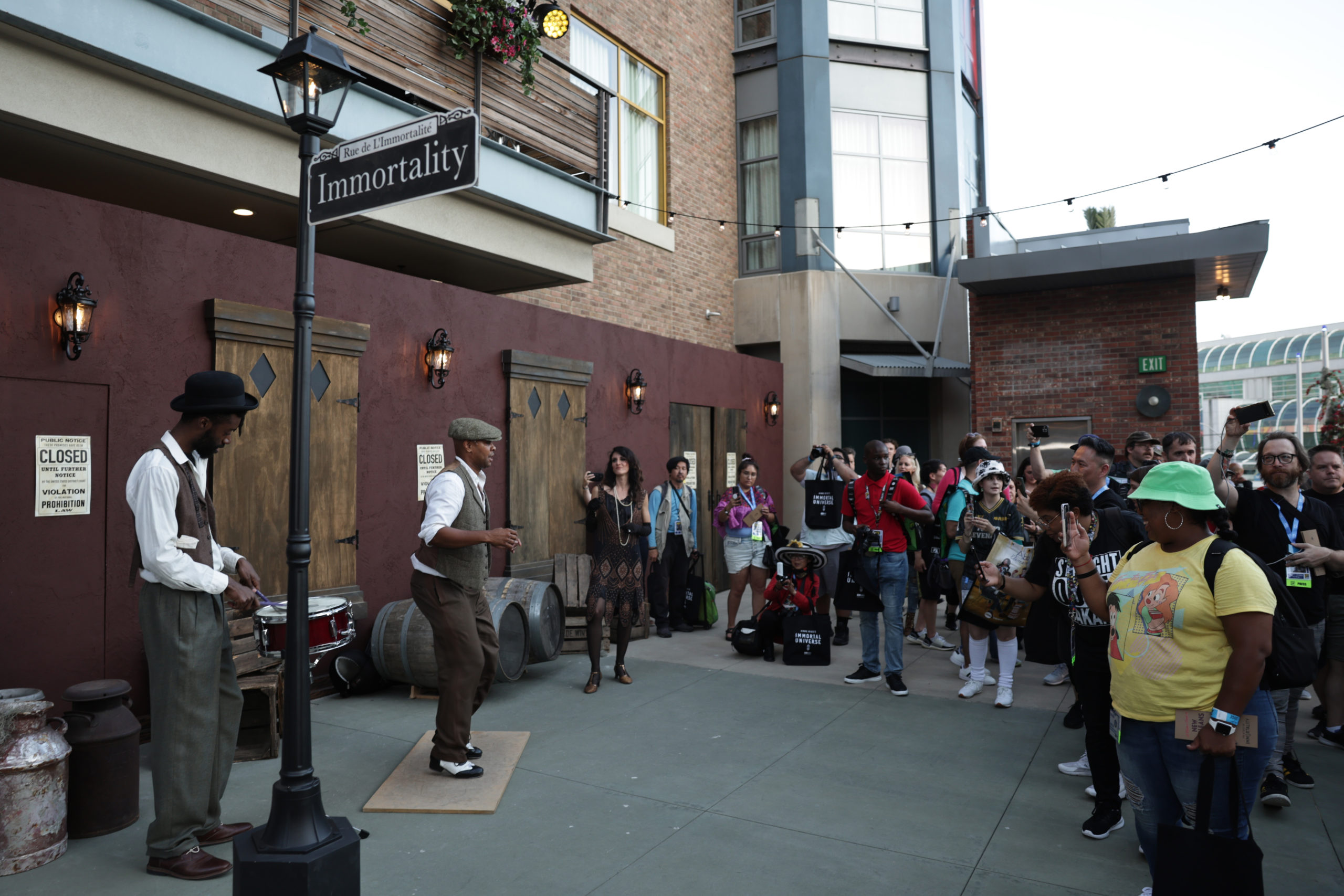
Whether you’re designing for a specific fan culture or trying to create your own, Campfire’s transmedia, multi-level storytelling offers some brilliant insights for immersing people in your story. Some key learnings we love:
- “Skimmers, dippers and divers” aren’t a funnel – they’re contextual categories that all have a vital role to play in your fandom.
- Leaving white space for the experience to adapt around the person – often through subtle suggestions that they can take ownership of – deepens your impact. As Monello says, “through story we can adapt and change to whatever we’re doing.”
- Understanding your fandom when talking to clients gives you negotiating power to create the kind of experience you know will have most impact. In Monello’s words: “if you can build a fandom, that is power.”
So next time you’re designing an experience, ask yourself:
- Can you define the skimmers, dippers and divers from an experience you’re working on?
- How do you create white space for individual stories?
- How do you prove success to your clients?
Want to come to live Campfires and join fellow expert experience creators from 39+ different countries as we lead the Experience Revolution forward? Find out more here.

